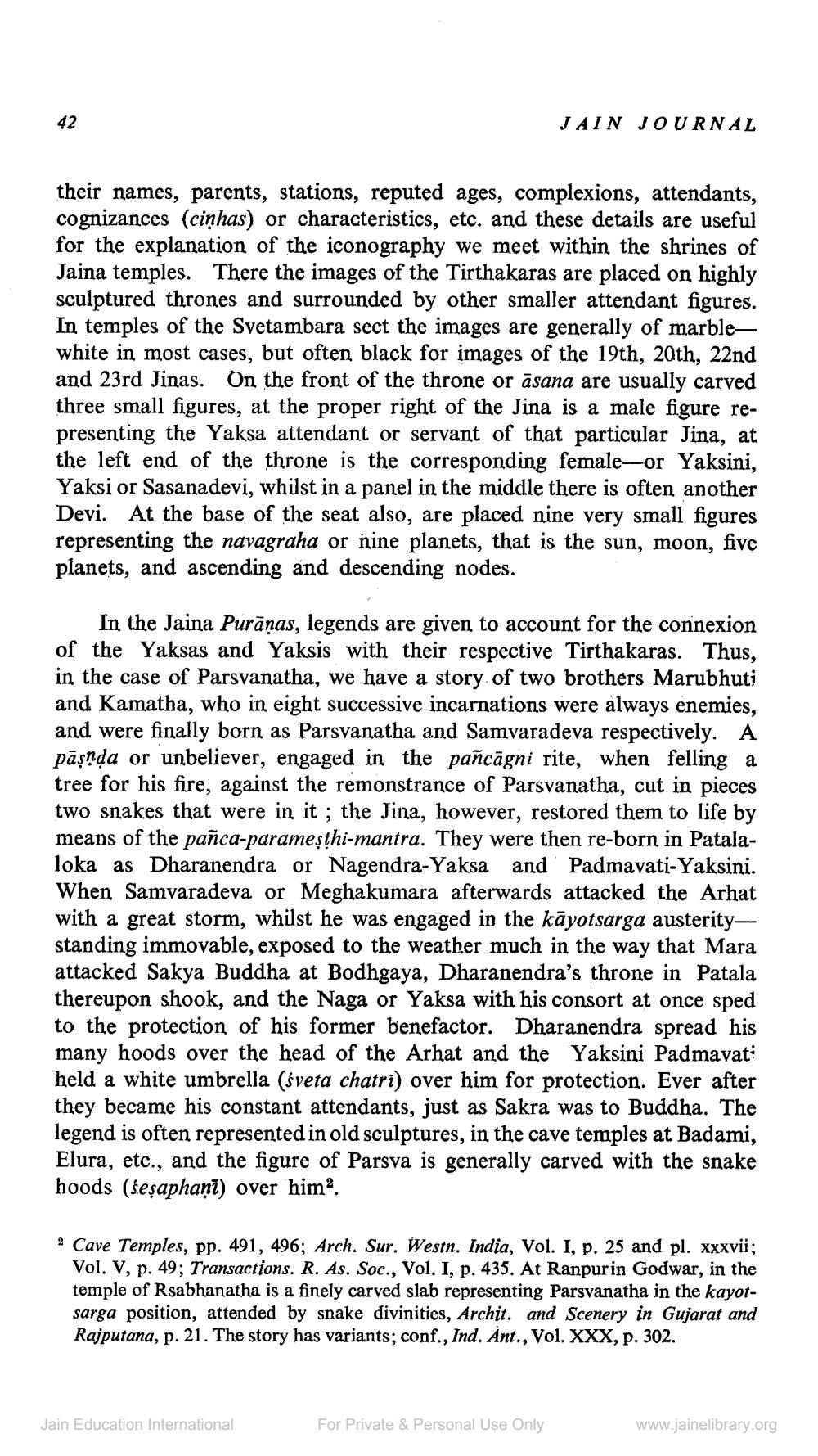Book Title: Jain Journal 1976 10 Author(s): Jain Bhawan Publication Publisher: Jain Bhawan Publication View full book textPage 4
________________ JAIN JOURNAL their names, parents, stations, reputed ages, complexions, attendants, cognizances (cinhas) or characteristics, etc. and these details are useful for the explanation of the iconography we meet within the shrines of Jaina temples. There the images of the Tirthakaras are placed on highly sculptured thrones and surrounded by other smaller attendant figures. In temples of the Svetambara sect the images are generally of marble white in most cases, but often black for images of the 19th, 20th, 22nd and 23rd Jinas. On the front of the throne or āsana are usually carved three small figures, at the proper right of the Jina is a male figure representing the Yaksa attendant or servant of that particular Jina, at the left end of the throne is the corresponding female-or Yaksini, Yaksi or Sasanadevi, whilst in a panel in the middle there is often another Devi. At the base of the seat also, are placed nine very small figures representing the navagraha or nine planets, that is the sun, moon, five planets, and ascending and descending nodes In the Jaina Purāņas, legends are given to account for the connexion of the Yaksas and Yaksis with their respective Tirthakaras. Thus, in the case of Parsvanatha, we have a story of two brothers Marubhuti and Kamatha, who in eight successive incarnations were always enemies, and were finally born as Parsvanatha and Samvaradeva respectively. A pāşnda or unbeliever, engaged in the pañcāgni rite, when felling a tree for his fire, against the remonstrance of Parsvanatha, cut in pieces two snakes that were in it ; the Jina, however, restored them to life by means of the pañca-parameșthi-mantra. They were then re-born in Patalaloka as Dharanendra or Nagendra-Yaksa and Padmavati-Yaksini. When Samvaradeva or Meghakumara afterwards attacked the Arhat with a great storm, whilst he was engaged in the kāyotsarga austeritystanding immovable, exposed to the weather much in the way that Mara attacked Sakya Buddha at Bodhgaya, Dharanendra's throne in Patala thereupon shook, and the Naga or Yaksa with his consort at once sped to the protection of his former benefactor. Dharanendra spread his many hoods over the head of the Arhat and the Yaksini Padmavat: held a white umbrella (sveta chatri) over him for protection. Ever after they became his constant attendants, just as Sakra was to Buddha. The legend is often represented in old sculptures, in the cave temples at Badami, Elura, etc., and the figure of Parsva is generally carved with the snake hoods (seșaphani) over him. 2 Cave Temples, pp. 491, 496; Arch. Sur. Westn. India, Vol. I, p. 25 and pl. xxxvii; Vol. V, p. 49; Transactions. R. As. Soc., Vol. I, p. 435. At Ranpurin Godwar, in the temple of Rsabhanatha is a finely carved slab representing Parsvanatha in the kayotsarga position, attended by snake divinities, Archit. and Scenery in Gujarat and Rajputana, p. 21. The story has variants; conf., Ind. Ant., Vol. XXX, p. 302. Jain Education International For Private & Personal Use Only www.jainelibrary.orgPage Navigation
1 2 3 4 5 6 7 8 9 10 11 12 13 14 15 16 17 18 19 20 21 22 23 24 25 26 27 28 29 30 31 32 33 34 35 36 37 38 39 40 41 42 ... 44
